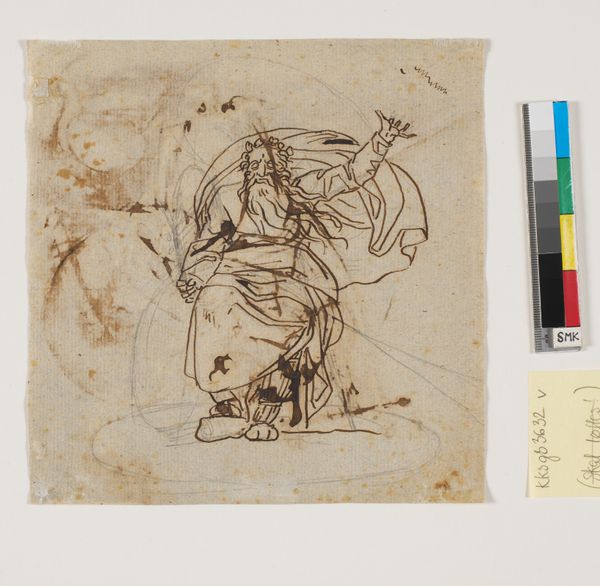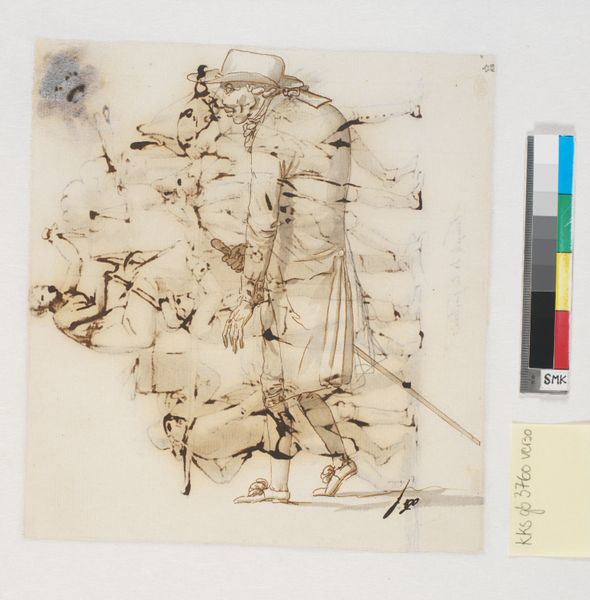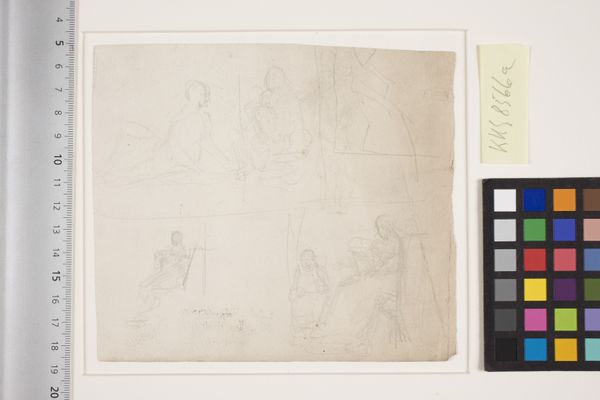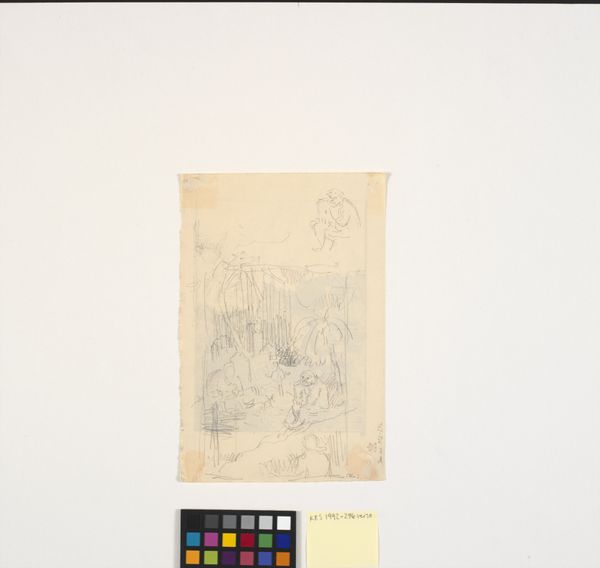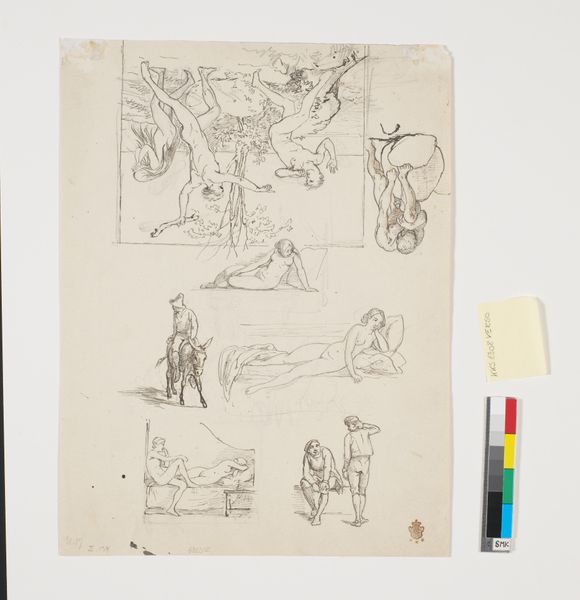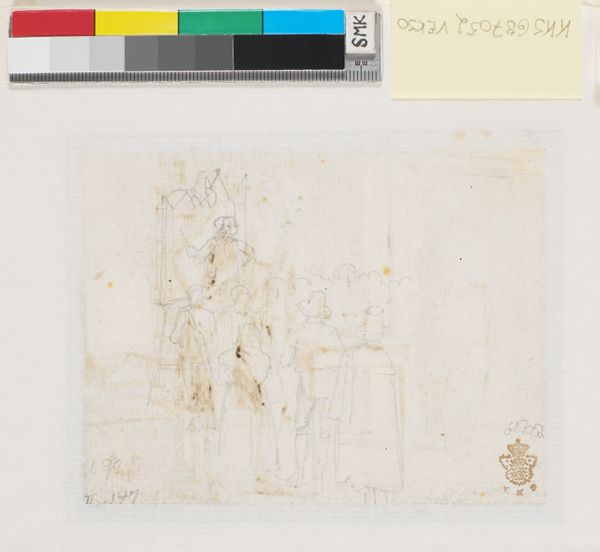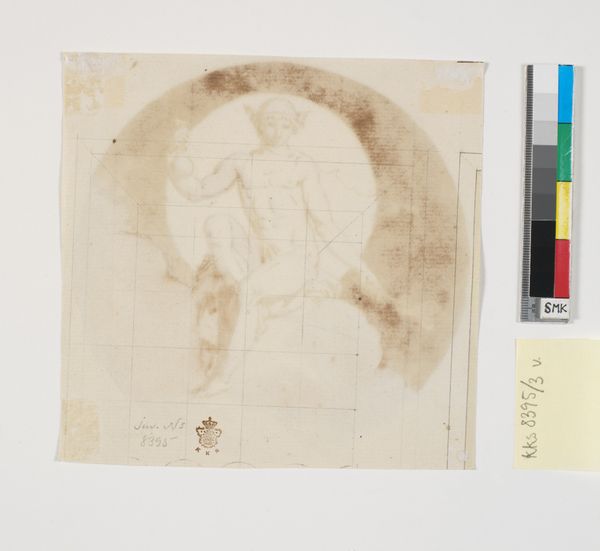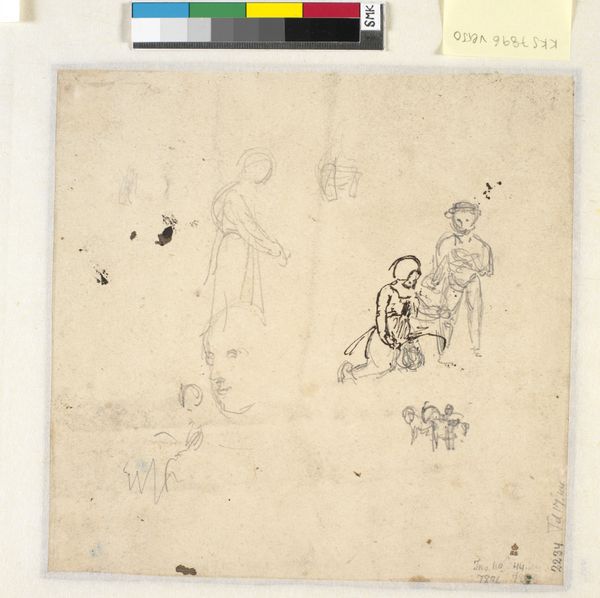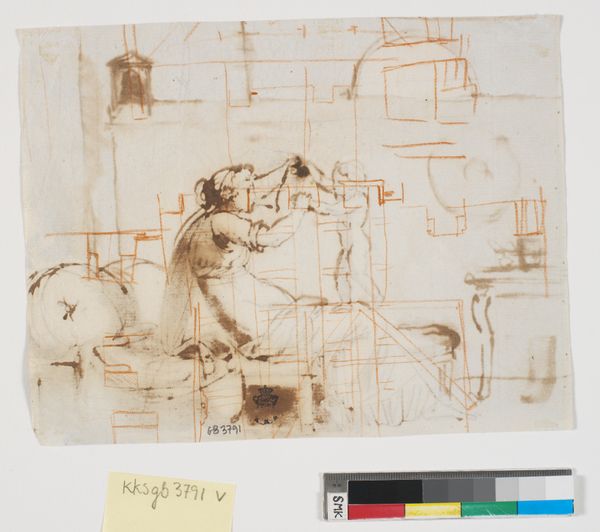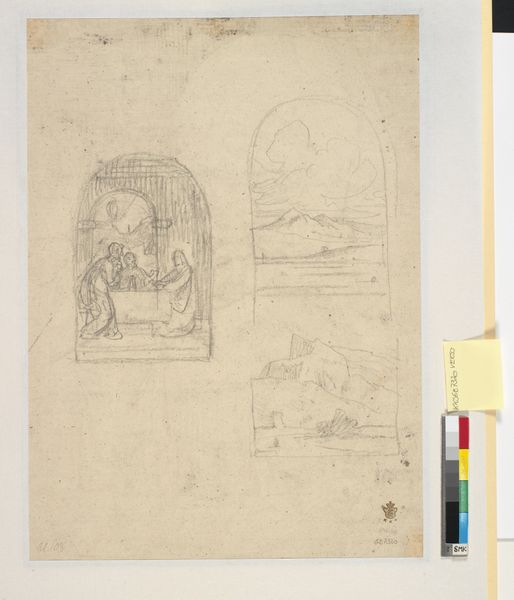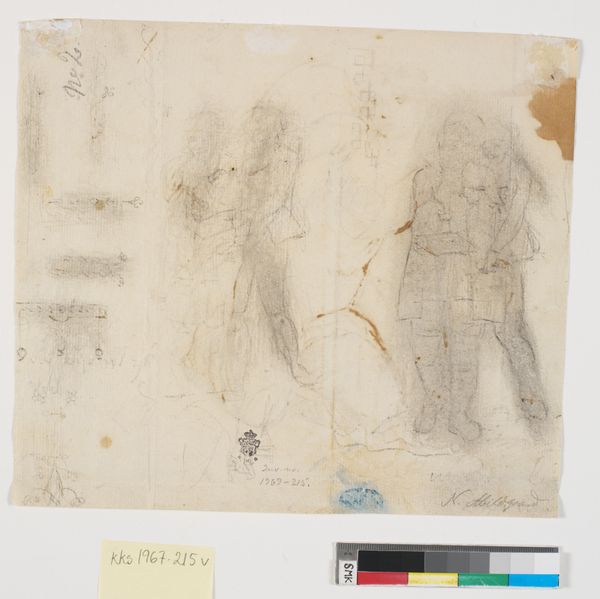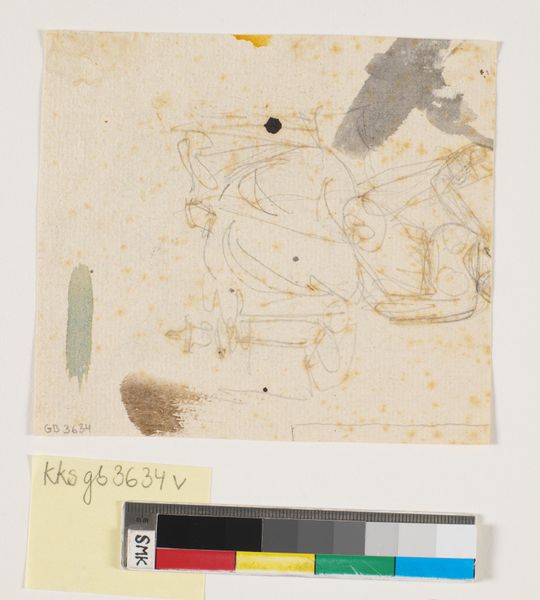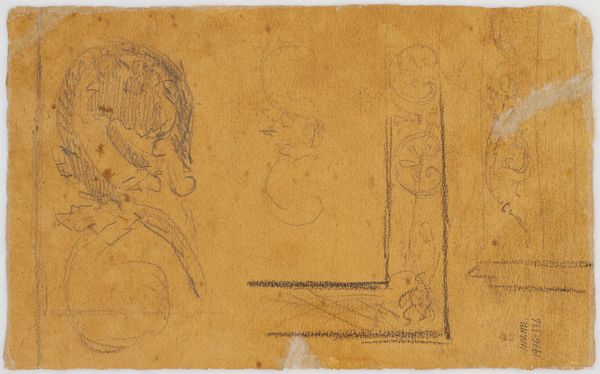
Udkast, formodentlig samme motiv som på forsiden 1798 - 1801
0:00
0:00
drawing
#
portrait
#
drawing
#
neoclacissism
#
figuration
Dimensions: 158 mm (height) x 163 mm (width) (bladmaal)
Editor: Here we have Nicolai Abildgaard's drawing, "Udkast, formodentlig samme motiv som på forsiden," created sometime between 1798 and 1801. It's a Neoclassical drawing depicting two figures. It feels very preliminary, but I'm curious about the story they might tell. How do you interpret this work? Curator: What strikes me is the interaction—the power dynamic almost—between the standing woman and the seated man. Consider the visual weight: she’s upright, possibly instructing or presenting something, while he is literally grounded, seemingly in contemplation or perhaps deference. Does this echo any contemporary societal norms that you know of? Editor: Well, given the Neoclassical period, it could relate to ideals of civic virtue and perhaps gender roles. Maybe the woman is personifying wisdom or reason? Curator: Precisely. Think about the recurrence of similar images throughout history. Are there parallels you can draw between this image and classical allegories, or even religious iconography? Consider the narratives that use a woman to represent truth, justice, or even temptation. Editor: Now that you mention it, there is a resemblance to depictions of the Muse inspiring a poet. Or perhaps something from classical mythology... I'm just not sure exactly which myth. Curator: The specificity might be lost to time, but the echo remains. It is a fascinating example of how images accrue layers of meaning over time, isn’t it? Do you feel it’s more potent because of its sketch-like, unfinished quality? Editor: Absolutely! It almost feels more raw and unfiltered somehow, which emphasizes the timeless themes it brings up. It is incredible to observe art through its symbols.
Comments
No comments
Be the first to comment and join the conversation on the ultimate creative platform.
